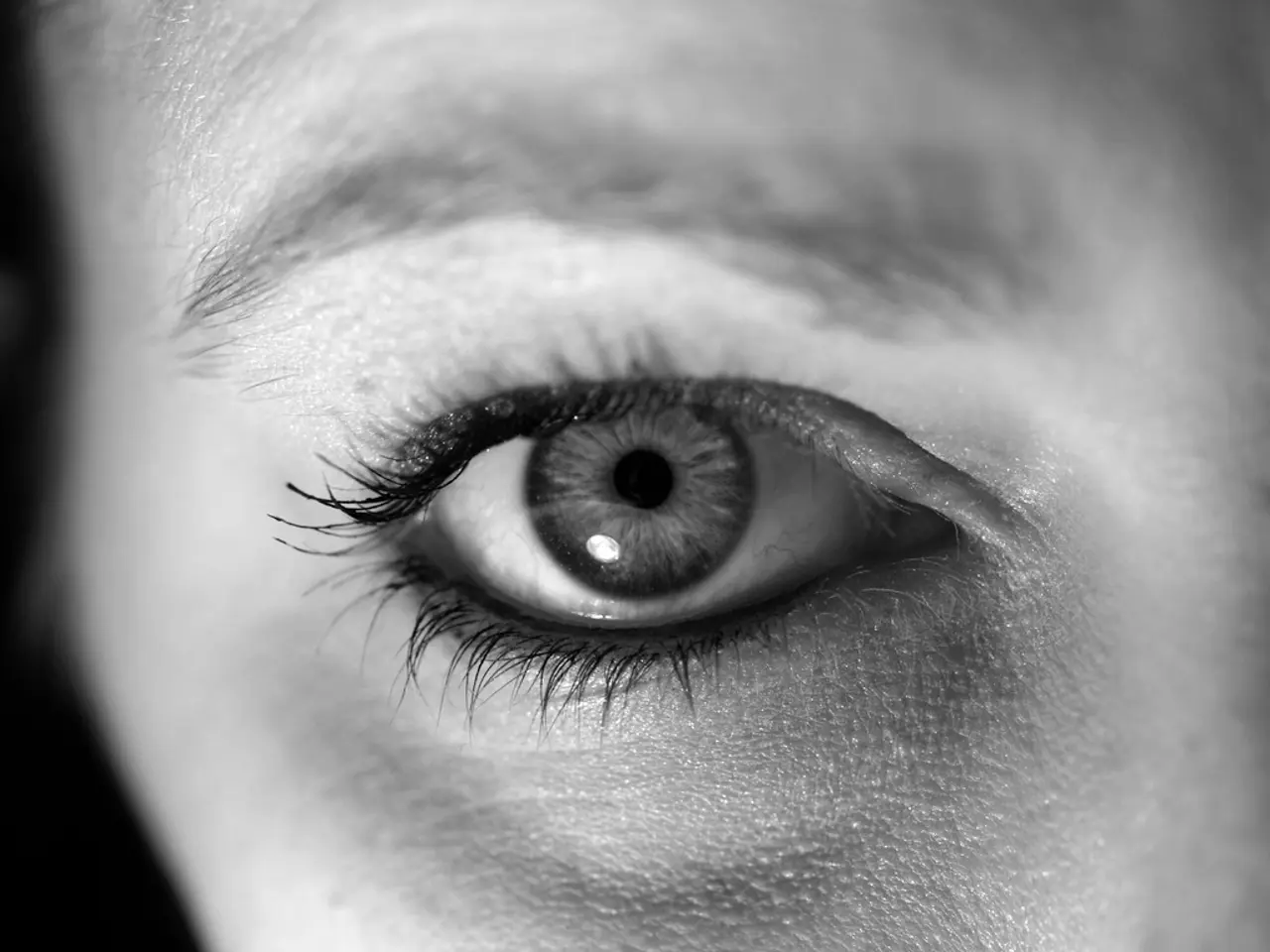Comparing retinal migraines to ocular migraines: their key distinctions and differences explained
Understanding the Differences Between Retinal and Ocular Migraines
Migraines can often be accompanied by visual disturbances, and two specific types of migraines that cause such symptoms are retinal migraine and ocular migraine. While these terms are sometimes used interchangeably, they refer to distinct conditions.
Retinal Migraine
Retinal migraine is a rare type of migraine that affects one eye, causing temporary vision loss or visual disturbances due to restricted blood flow or spasms in the retinal blood vessels. Symptoms typically last between 5 and 60 minutes and are often followed by a headache within an hour.
Some preventive medications, such as calcium channel blockers, anti-seizure drugs, and antidepressant medications, can help reduce the number of retinal migraine episodes. However, it is crucial to avoid certain migraine medications, like beta-blockers and ergots, as they can increase the risk of permanent vision loss in retinal migraine.
Certain elements of a person's daily life, environment, and diet can trigger a retinal migraine episode, including stress, high blood pressure, smoking, hormonal birth control pills, not drinking enough water, and hypoglycemia.
Ocular Migraine
Ocular migraine, on the other hand, can refer to migraines with visual aura that are often perceived in both eyes or both visual fields. These visual symptoms are caused by abnormal brain activity rather than the retina alone. Symptoms typically include flickering lights, zigzag patterns, or blind spots but are not limited to one eye only.
Migraine with aura can occur without a headache, which differentiates it from retinal migraine. In some cases, it may be necessary to rule out other eye or neurological conditions before diagnosing retinal migraine.
Managing Retinal Migraine
The first line of treatment for retinal migraine is prevention, which can involve making dietary adjustments to remove trigger foods, quitting smoking, and managing blood pressure. Daily low dose aspirin can also be helpful in managing retinal migraine.
It is important for an individual to speak with a doctor about retinal migraine symptoms, as they are similar to some symptoms of a stroke. Identifying stroke symptoms early can help the person seek help quickly.
In summary, retinal migraine causes temporary vision loss in one eye due to retinal blood vessel spasms, while ocular migraine often refers more broadly to visual migraine symptoms (migraine with aura) that affect vision in both eyes and are due to brain cortical activity changes. Both types of migraines require careful management and may require a combination of lifestyle changes and medication to control symptoms.
- Understanding the differences between retinal and ocular migraines is essential for accurate diagnosis and effective treatment.
- While retinal migraine and ocular migraine terms are sometimes used interchangeably, they refer to distinct conditions.
- Retinal migraine affects one eye, causing temporary vision loss or visual disturbances due to restricted blood flow or spasms in the retinal blood vessels.
- Symptoms of retinal migraine typically last between 5 and 60 minutes and are often followed by a headache within an hour.
- Preventive medications, like calcium channel blockers, anti-seizure drugs, and antidepressant medications, can help reduce the number of retinal migraine episodes.
- Beta-blockers and ergots should be avoided as they can increase the risk of permanent vision loss in retinal migraine.
- Stress, high blood pressure, smoking, hormonal birth control pills, not drinking enough water, and hypoglycemia can trigger a retinal migraine episode.
- Ocular migraine can refer to migraines with visual aura that are often perceived in both eyes or both visual fields.
- These visual symptoms are caused by abnormal brain activity rather than the retina alone.
- Symptoms of ocular migraine typically include flickering lights, zigzag patterns, or blind spots but are not limited to one eye only.
- In some cases, it may be necessary to rule out other eye or neurological conditions before diagnosing retinal migraine.
- Migraine with aura can occur without a headache, thereby differentiating it from retinal migraine.
- The first line of treatment for retinal migraine is prevention, which can involve making dietary adjustments, quitting smoking, managing blood pressure, and taking daily low-dose aspirin.
- It is important for an individual to speak with a doctor about retinal migraine symptoms, as they are similar to some symptoms of a stroke.
- Identifying stroke symptoms early can help the person seek help quickly.
- Science plays a crucial role in understanding migraines, their causes, and potential treatments, contributing to advancements in the fields of neurological disorders, environmental science, and health and wellness.
- Migraines, including retinal and ocular migraines, can affect various aspects of a person's life, such as workplace-wellness, mental-health, women's health, and mens's health.
- Therapies and treatments for migraines, such as nutrition, fitness and exercise, skin-care, hearing aids, and cannabidiol (CBD), can help manage symptoms and improve overall health and well-being.




